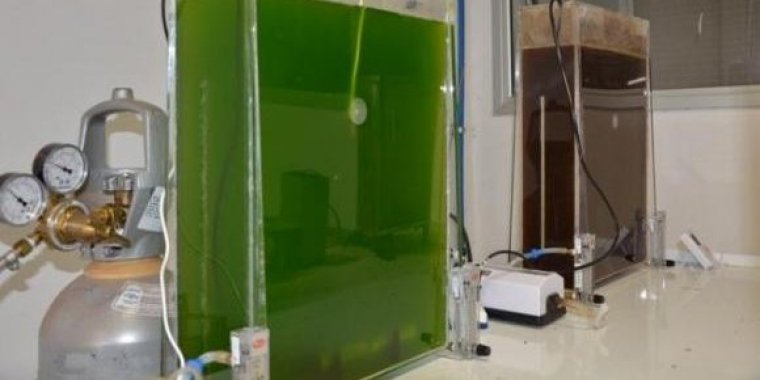| News / Science News |
Brazilian researchers identify microalgae that can provide biofuels
A research project conducted by the Agroenergy division of the Brazilian Agricultural Research Corporation (EMBRAPA) has identified species of microalgae that can be grown in liquid waste from agroindustrial processes to provide renewable raw materials.

A photobioreactor used by the Brazilian Agricultural Research Corporation. ![]()
Besides fuel, microalgae can provide animal feed and oil for cosmetics and toiletries. The study took three years to complete.
The researchers used vinasse, a byproduct of sugarcane ethanol and sugar production, and a residue known as POME (palm oil mill effluent), which results from palm processing and is used in the fertirrigation of plantations.
According to EMBRAPA experts, using these low-cost effluents as a medium to grow microalgae could add value to the sugarcane and palm oil production chain by enabling the production of larger amounts of biomass and oil for energy and bioproducts.
Microalgae are microscopic unicellular organisms that live in aquatic environments. They are not plants, but are able to photosynthesize and develop using sunlight and carbon dioxide. They reproduce very quickly, yielding large amounts of oil and biomass.
Its productivity can be 10-100 times greater than that of raw materials from traditional agricultural crops. This has caught the attention of industries that require large amounts of raw materials, including biofuels.
The oils produced by certain species are very often rich in compounds like Omega 3 and carotenoids. This ensures they have a place in industries that serve niche markets and pay more for raw materials with unusual properties—which is the case with cosmetics and dietary supplements. (Agência Brasil)
YOU MAY ALSO LIKE


